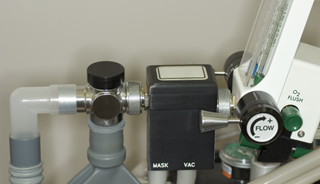the Psychiatry Advisor take:
Nitrous oxide, also known as laughing gas and a staple of a dentist’s office, helped relieve depressive symptoms in a small number of patients with treatment-resistantdepression.
Peter Nagele, MD, an anesthesiologist at Washington University School of Medicine in St. Louis, and colleagues conducted a small study involving 20 depressed patients whose symptoms did not improve on antidepressants. Each participant had a one-hour session of laughing gas and placebo, spaced a week apart. Depressive symptoms were measured two hours, 24 hours, and one week after each session.
One day after receiving nitrous oxide, three patients reported that their symptoms had disappeared almost completely, and another seven reported significant improvement, the researchers reported in the journal Biological Psychiaty. Another seven participants reported mild improvement in their symptoms. But no one reported symptom worsening after they were administered laughing gas.
Meanwhile, a day after taking the placebo, none of the patients reported their depression was virtually gone, and one reported feeling worse the next day. But there was a placebo effect seen the day after as five patients reported feeling mild improvement and two reported significant improvement.
Although further study is needed, nitrous oxide could become a safer option to another alternative depression treatment, ketamine. Both drugs are antagonists that work on the brain’s NMDA receptors, which influence neurotransmitters and brain signaling.
 Laughing Gas Examined For Treatment-Resistant Depression
Laughing Gas Examined For Treatment-Resistant Depression
The dentist's office might be the last place you'd look to find a quick cure for an implacable bout of depression. But new research suggests that laughing gas — the mixture of nitrous oxide and oxygen that eases the pain and anxiety of having dental work — may help banish treatment-resistant depression in about the time it takes to fill a cavity.
At concentrations used in dentist's offices, and in the latest study, laughing gas can induce euphoria, disorientation and mild sedation. The experience is sought out by some drug abusers, who inhale the propellant in jarred whipped cream for a fleeting high
But it is actually another legitimate sedative-turned-party-drug, ketamine, that prompted researchers to explore whether nitrous oxide might have a rapid anti-depressant effect.